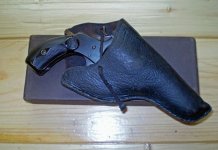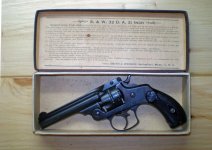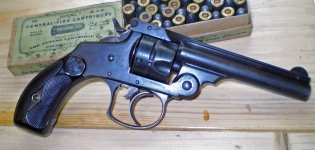. . . I would not endanger grandpa's gun, made in the 1880's by firing any factory ammo in it, I do not care how much everyone insists on its low pressure . . .
I think we need to see your data supporting the dangers of shooting current factory loaded 32 S&W ammunition. A person cannot just make a statement like this without data to support their position. If you do not have any data, you can’t make blanket comments on unfounded perceived dangers here.
The 32 S&W was originally loaded with black powder, pretty much like 4F powder of today, but actually finer. The Peters case was loaded with 10 grains, under an 88 grain bullet, while the US Cartridge Co. cartridge was loaded with 8 grains under a 85 grain bullet. I have shot these loads in the past and chronographed both and the averages were: US Cartridge - 800fps and the Peters averaged 740fps.
I have also chrongraphed both recently manufactured Remington and Winchester 32 S&W factory loads and the results were as follows:
Remington 88 grain RN 580fps
Winchester 85 grain RN 540fps
Can I tell you the pressures of these 4 cartridges? I cannot, but with factory velocities being almost 30% less, I can all but guarantee that the pressures are lower than original. Actually, I have done these same experiments with everything from 22 to 45 Schofield and found that all "standard" current factory loads yield lower velocities than original BP or smokeless loads.
Lastly, I have inquired with Remington in the past and I must tell you that they do not want to be quoted on anything that has to do with current factory ammunition being shot in antique firearms, BUT when I shared my velocity data with them, they agreed that lowering original loadings for older calibers was an important design feature in their manufacture and that was good enough for me.
There are studies out there comparing the pressure curves of Black Powder to standard fast burning shotgun powders, and they find that the pressure cures down the length of a gun barrel are almost identical. There is no difference in where the pressure spikes and no difference in pressure readings for the same MV loadings.
Now let us see your data and we can have a discussion. Can you break a 150 year old gun shooting it today? Absolutely, but it is not because of what you shoot in it, since it might break dry firing with nothing in the chambers in about the same amount of time due to years of repetition and metal fatigue.











